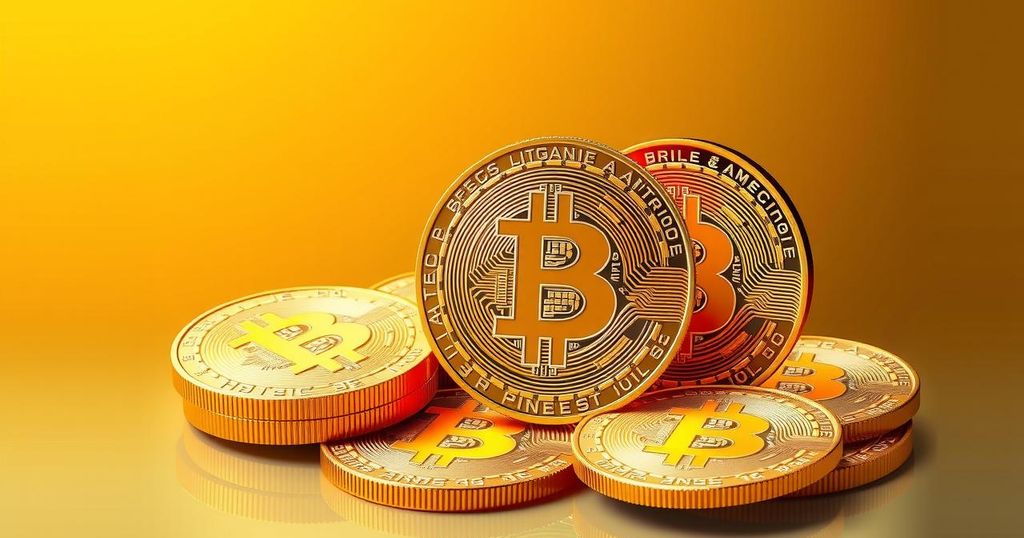Bitcoin ETFs Outpace Miners, Acquiring 81,015 BTC Amid Supply Crunch
Bitcoin ETFs have outpaced miners in 2025, buying 81,015 BTC compared to 69,284 BTC mined. This institutional interest may lead to a price surge in Bitcoin, particularly as the supply tightens ahead of the 2024 halving. BlackRock’s Bitcoin ETF exemplifies this trend, establishing long-term accumulation strategies, as future market dynamics reflect a bullish outlook despite current fear sentiments.
In a striking turn of events, Bitcoin exchange-traded funds (ETFs) have made significant moves this year, purchasing a total of 81,015 BTC, outpacing the mined figure which stands at just 69,284 BTC. This uptick appears to signal a growing institutional interest, leading to a tighter supply and, potentially, a spike in Bitcoin prices.
The demand from institutional-backed Bitcoin ETFs is notably overwhelming, as they’ve been accumulating Bitcoin faster than miners can produce it. With 2025 marking a year of heavy ETF buying, the swift reduction in available Bitcoin often suggests that a price rally could be on the horizon. Investors are increasingly opting for ETFs, as they provide a means to engage in Bitcoin investment without the complexities of direct acquisition.
Institutions like BlackRock, which have launched their own Bitcoin ETFs, are now holding Bitcoin for the long haul. This trend is crucial; long-term holding by these large entities lends an air of credibility and stability to the market. Notably, BlackRock’s ETF, known as IBIT, has soared in assets under management, hitting over $70 billion within just 1.4 years, securing its place among the top 25 ETFs.
On April 19, 2024, Bitcoin saw a halving event that cut miner rewards in half, from 6.25 BTC to 3.125 BTC per block. While the number of new Bitcoins being mined decreases, institutional demand continues to ramp up, creating a more pronounced scarcity. This imbalance is increasingly observed, as the demand from Bitcoin ETFs exceeds what miners can generate, naturally pushing prices upward.
Historically, Bitcoin has typically followed a trend of rising prices after a halving, coinciding with increased demand and decreased supply. The current market scenario suggests we may be in for a repeat of that trend, with premiums on Bitcoin as larger institutions jump on board; their involvement often leads to rising prices, attracting further investments and fuelling additional growth.
Turning to the futures market, the Cumulative Volume Delta (CVD) chart for Bitcoin’s futures trades shows a strong momentum towards buying. The frequent appearance of more buying (indicative green bars) compared to selling (red bars) suggests buyers are firmly in control during this rally. The positive correlation between increased buying activity and Bitcoin price from 2023 through 2025 indicates that demand is indeed powering the market.
Notably, despite selling pressures denoted by red bars on the charts, Bitcoin’s steady upward trajectory remains largely unscathed, attributed to profit-taking by investors rather than any fundamental weakness. The neutral periods marked by gray bars imply some indecision among traders, yet no strong bearish trends have emerged to dampen market sentiment.
Encouragingly, forecasts hint at a potential surge, with Bitcoin expected to reach $116,303, reflecting a remarkable rise of 12.08% by next month. Nevertheless, while technical indicators support a bullish outlook, the Fear & Greed Index currently lingers in the Fear zone, suggesting caution among market participants. Recent performance showcases that Bitcoin has had 15 green days against 30 total, along with a price volatility of 2.80%.




Post Comment